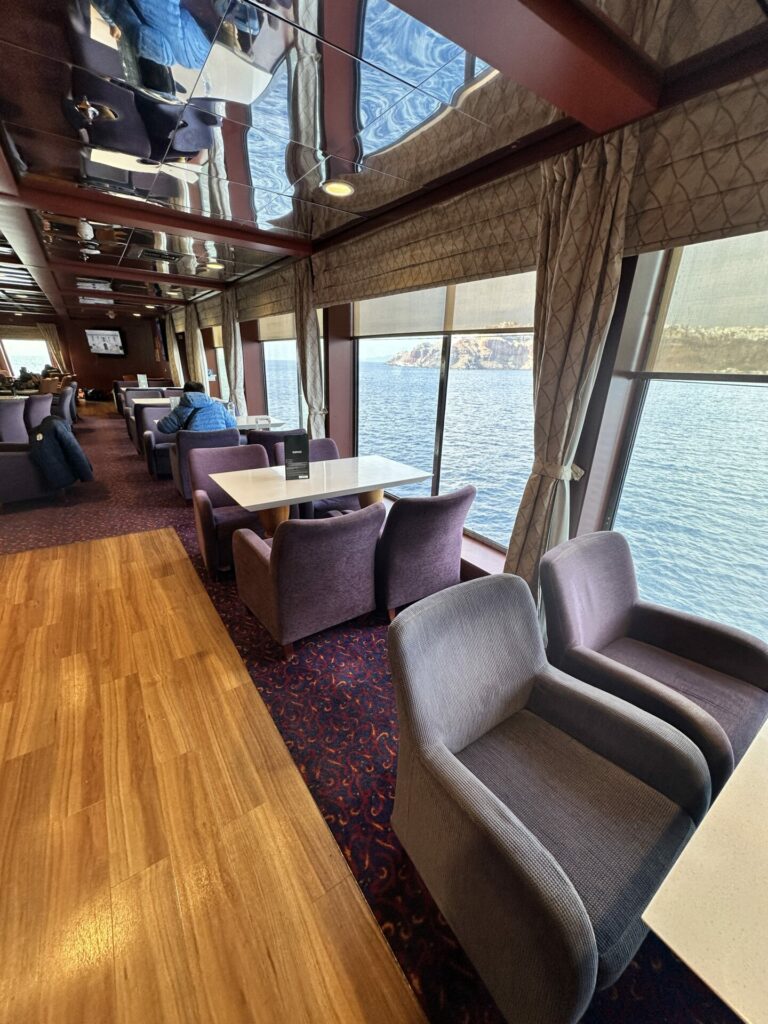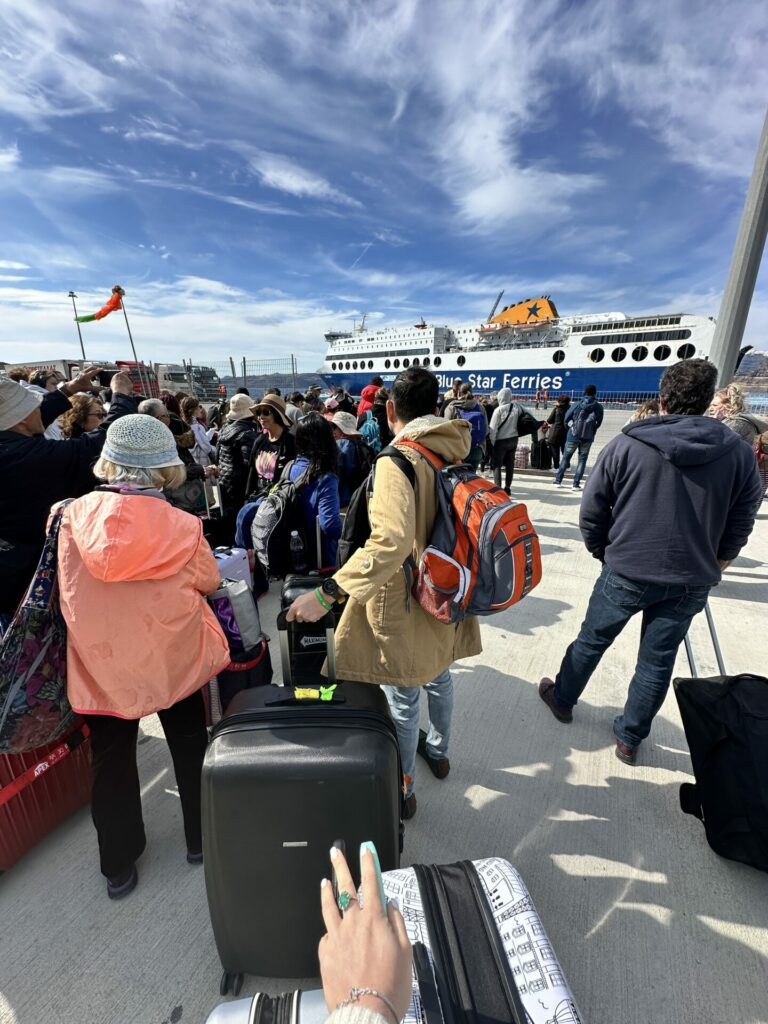
Essential Guide to Ferry Travel in Greece: Island Hopping Simplified
Greece – a nation so intertwined with the sea that its very identity and culture are shaped by the Aegean and Ionian waters. For travelers, the allure lies not just in the dramatic landscapes but in the promise of island-hopping adventures. With hundreds of islands scattered in this azure playground, ferries become the threads that weave every island dream into a tangible, salty-air reality. Here’s how to make the most of your ferry adventures in this Grecian paradise. Sprinkled with insights to keep your dreams afloat, even when the winds are mercurial.
Setting Sail: Grasping the Greek Ferry Landscape
Imagine stepping on a ferry and within hours, finding yourself in a different world. That’s the magic ferries bring to Greece, a country that boasts one of the most comprehensive and enchanting ferry networks globally. Whether it’s the large, fast ferries that mimic luxurious cruises or the pint-sized Dolphins for quick jaunts, Greece has it all.
Firstly, it’s crucial to understand the Greek ferry infrastructure. The island chains closer to the mainland are usually connected by both regular ferries and high-speed catamarans or hydrofoils. These are efficient and relatively quick, perfect for a day trip or a leisurely island combination. When you venture further into the Aegean, the ferries may become larger and the journeys longer. But fear not the voyage for here, even the travel is part of the adventure, especially if you’ve planned some downtempo exploration or stargazing under your personal Greek sky on board.
Before you start mapping out your island hopping escapades, acquaint yourself with the ferry basics. Greece’s ferries come in various guises, each with its own charm and quirks.
Types of Ferries in Greece
The first step in mastering ferry travel in Greece is to familiarize yourself with the different types of ferries plying the Greek waters.
Conventional Ferries: These are the workhorses of the Greek ferry fleet, characterized by their traditional and leisurely sailings, which can range from a few hours to an overnight trip. With their roomy decks, open-air seating, and often Spartan interiors, conventional ferries are a budget-friendly option for the intrepid traveler.
High-Speed Ferries (HSC): If time is of the essence, high-speed ferries, known as HSC or Hydrofoils, are your best bet. They can shrink travel times from one or two days to mere hours, whisking you to the remotest corners of the Greek archipelago in no time. These ferries come with air-conditioned lounges, snack bars, and the comfort of a smoother ride over choppy waters.

A Fleet For Every Need:
SpeedCat and Speed Dolphins: Smaller yet agile, these ferries are perfect for short hops, but can be more weather-dependent.
Understanding the Class System
Just like airlines, Greek ferries offer passengers a variety of ticket classes designed to accommodate different budgets and comfort levels.
Air Type Seats: These are the economy class seats, familiar to anyone who’s traveled by air. They’re comfortable and arranged in cabin-like configurations that maximize space. Although they don’t come with an assigned seat, you’re free to select any available space on the ferry, from the air-conditioned indoors to the sun-drenched upper deck.
Deck/Economy Class: The most affordable option is great for short journeys and those who enjoy the bracing sea breeze. It’s a no-frills experience, with open-air seating and an absence of creature comforts.
Cabins: For overnight voyages, cabins offer a private oasis. They come in various sizes and with different amenities, such as portholes or en-suite bathrooms, allowing you to tailor your ferry overnighter to your specific needs.
Greek Ferries: Planning Your Route
Establishing your island-hopping itinerary is a blend of art and logistics. Boil down your preferences—whether it’s the party scene of Mykonos, the tranquility of Naxos, or the volcanic allure of Santorini—and chart a course that balances your interests with ferry timetables.


Greece’s ferry schedule :Sailing Through the Seasons
Greece’s ferry schedule is intricately linked to the seasons. The Aegean is a summer wonderland where ferries run more frequently, but come winter, services scale back, and some routes might not operate at all.
How to Navigate the Ferry Schedules
The Greek ferry schedule is a living organism, with routes and timings shifting like the tides. To ensure your odyssey aligns with your travel dreams, follow these tips:
- Stay Updated: The only constant in ferry schedules is change. Follow the mantra ‘check your ferry, check it twice’ to avoid any unforeseen changes in timetables, often affected by weather and seasonal demand.
- Advance Bookings: While spontaneity is the soul of travelers, those must-see islands at the tip of everyone’s tongue (and travel guide) might require a bit of forward planning. Islands like Santorini and Mykonos are popular for a reason, and their ferries tend to fill up fast.
- Prime Time Ferries: On Fridays and Sundays, both international and domestic travelers converge on the port cities, and ferry tickets, particularly for the most popular island trio—Santorini, Mykonos, and Crete—can become as elusive as a calm Aegean breeze in peak seasons.
- Check the Weather: Not just for picnics and beach days, the weather forecast can be your travel oracle. Ferries, especially the high-speed ones, can be prone to cancellations or delays during stormy seasons.
Conclusion:


Navigating the Seas of Choice
There’s a plethora of islands to choose from in Greece, each with its unique charm, history, and local color. You’re spoiled for choice with over 200 inhabited islands, including idyllic and popular destinations like Santorini, Mykonos, Crete, and Corfu, to name a few. To start your island-hopping adventure, one must first grasp the heart of Greek maritime travel—the ferry. Unlike planes that hurriedly hop from one airport to another, ferries saunter through the blue, offering an experience in time-honored relaxation where the destination is part of the voyage.


Choosing Your Seat or Cabin
When the time comes to reserve, don’t be baffled by the various seating choices.
- Air type seats mimic the familiar airplane layout, allowing you to roam the ferry freely and even catch some z’s.
- Economy class is for the lean traveler, ready to brave the open, seascape skies.
- For a little privacy and comfort, cabins come in various sizes and with or without portholes, providing a cozy nook for you and your traveling companions.
Navigating the Greek Ports with Finesse
Athens isn’t the only port of call. There’s Rafina and Lavrion, strategically placed to save you time en route to different island groups. Each port is a cog in the well-oiled machine of Greek sea travel, serving specific island clusters with efficiency that’s as enchanting as the destinations themselves.
Piraeus: The bustling hub of most ferry activity, with schedules as synchronized as a Greek dance. Catch connections here bound for the Cyclades, Crete, and more.
Rafina: A quicker gateway to northern gems like Mykonos and Andros, offering a path less traveled (exclusively by tour buses).
Lavrion: This is your go-to for a direct line to the Cyclades. It might have a more modest ferry schedule, but for some islands, it’s the best and only choice.
Navigating the Seas of Choice
There’s a plethora of islands to choose from in Greece, each with its unique charm, history, and local color. You’re spoiled for choice with over 200 inhabited islands, including idyllic and popular destinations like Santorini, Mykonos, Crete, and Corfu, to name a few. To start your island-hopping adventure, one must first grasp the heart of Greek maritime travel—the ferry. Unlike planes that hurriedly hop from one airport to another, ferries saunter through the blue, offering an experience in time-honored relaxation where the destination is part of the voyage.





Leave a Reply